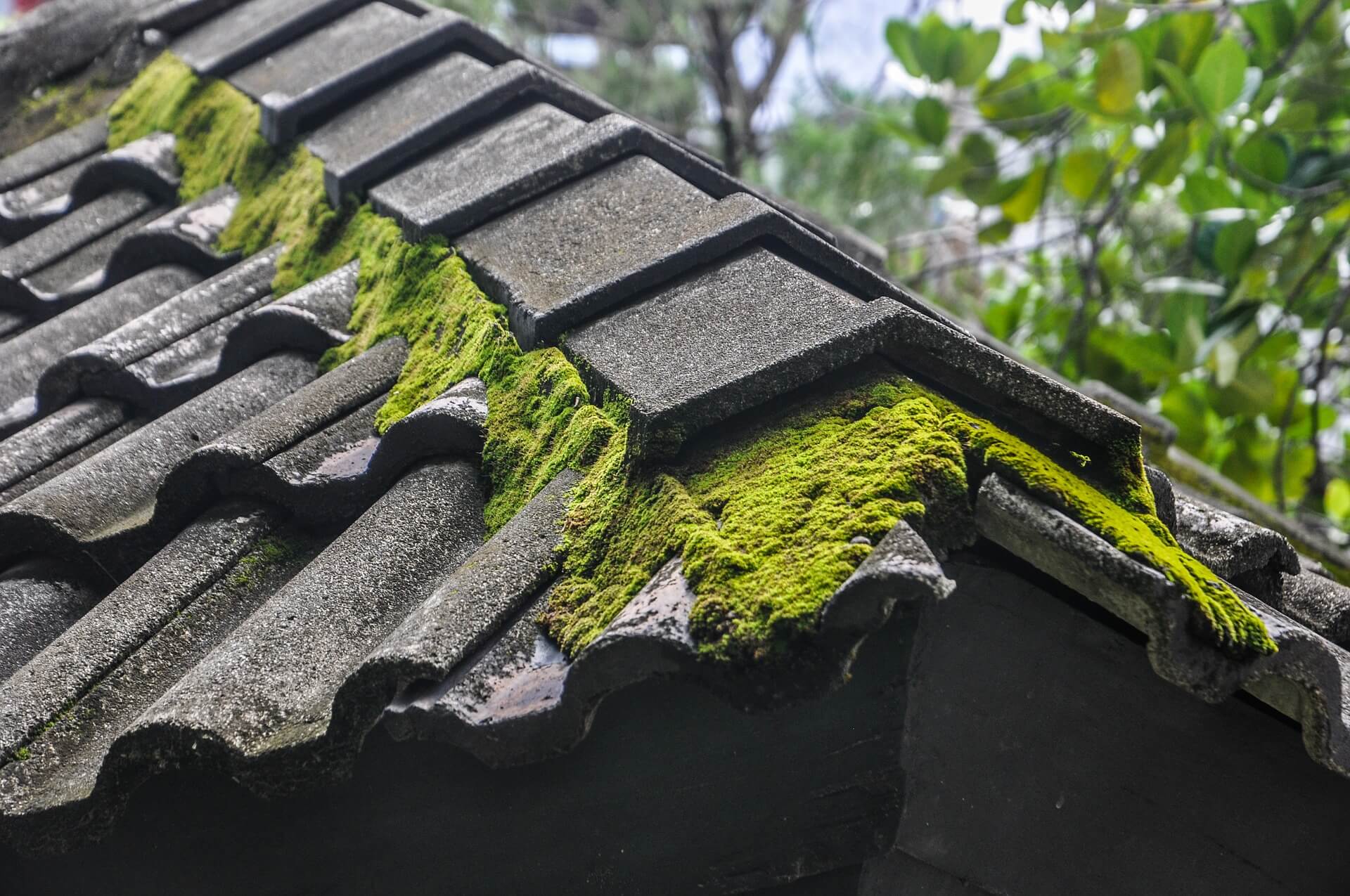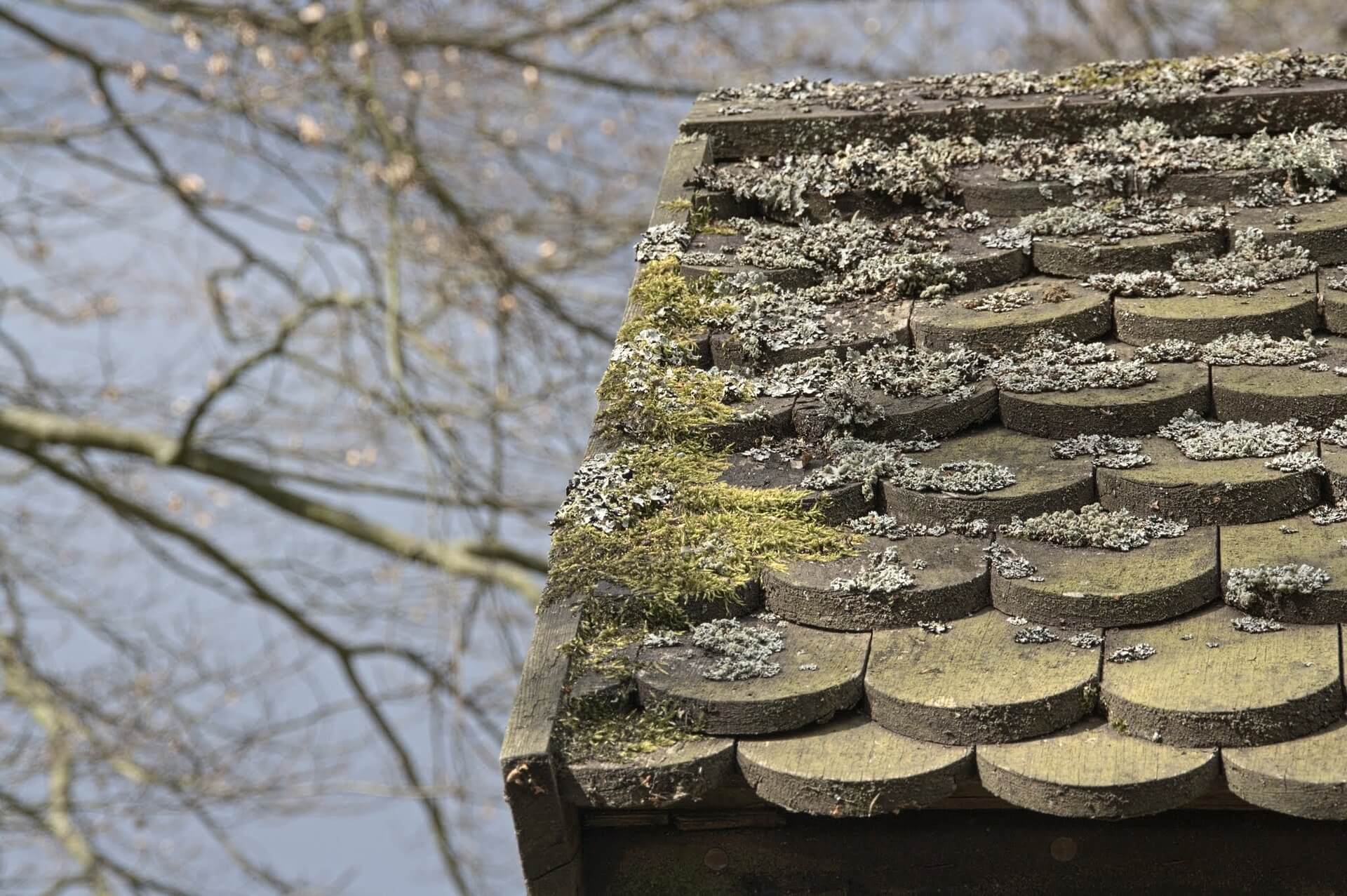Every day when you come home from work you look up and notice the dark green patches of moss growing on your roof. It’s an eyesore and you’d like to get rid of it. You’re free this weekend and decide it’s the perfect odd-job for you to tackle. But before you rush into the garage, grab you ladder and shimmy up onto the roof, read on, as we’ve come up with some great tips to help you get rid of that moss safely and easily.

What is this stuff we call moss?
Moss is a green, flowerless plant that has no true roots. It grows in low mounds or rounded cushions in shady, damp and wet habitats – it loves dark, cool, moist areas. Because it has no root system, it needs a damp environment to thrive. When leaves and grit are blown onto a roof and are lodged there for some time, they begin to decay and this provides the perfect ‘growing bed’ for spores of lichens, weeds and moss that are carried in the wind and blown onto them.
Should we clean moss off our roofs?
Some experts say that moss doesn’t cause a problem, but many others differ. ‘Moss only needs to be removed if it causes gutters, outlets, and other drainage points to be blocked, otherwise it can remain,’ say some. But others say that moss shouldn’t be allowed to grow and build up. Why? Because moss build-up could be one of the reasons for roof problems including raised tiles, leaks and damp.
As moss grows and thickens on your roof, it can cause lifting of the roof tiles, and when this occurs rain water can easily pass under them onto the roof timbers of your home and start to rot the wood. Water can also run down the interior walls of your house and cause serious damp and mould problems.
Raised roof tiles are also a danger in heavy winds – tiles can catch the wind like a sail, blow off the roof and cause serious injury to someone below. You’ll also be missing some tiles so there’ll be exposed areas on the roof, and you’ll need to replace these pretty quickly before it rains again. The more moss that grows and accumulates on your roof, the more debris that is trapped there. This invariably results in a build-up of water, and will leave your roof at risk of leakage and rotted timbers.

There are 3 factors that promote the growth of moss:
- A cool or cold, moist climate combined with dark and/or shade.
- An acidic environment where the pH level is between 5.0 and 5.5.
- A hard surface like roof tiles – moss loves growing on these.
How to kill and prevent moss from growing on your roof?
There are a number of things you can do to prevent moss from growing on your roof. Here are some of the basic ones plus a few others you may not have heard of before but do the job very well.
- Keep the roof out of the shade and in as much sunlight as possible. This may mean removing some tree branches, or even felling some trees.
- At the crest of the roof ridges, fit some copper or zinc strips.
- At varying intervals, string some copper wire across the roof, using screws or nails driven into timber on the sides of the roof (don’t drive them into the tiles as they could crack them and cause leaks).
- Don’t let the dirt build up – keep the roof free of any leaves, dirt and debris.
- Try to make the area extremely acidic (above a pH 7 level). There are roof spray products on the market you can use.
- If you’re not exactly sure what to do, then hire a professional moss removal company to deal with the problem.
What shouldn’t I do to remove moss?
Finally, here are 3 key things you shouldn’t do to remove moss:
- Pressure washing your roof is not recommended as this can shorten the lifespan of your roof. The high-powered jet spray removes the asphalt tile granules which help protect your roof tiles. Also, if you spray at an upward angle, water will get in underneath the tiles, which can cause damp and wood-rot problems. Other gutter cleaning methods are advised however.
- Be circumspect when using acids to remove moss. If the acidic mixture is too strong, or it remains on the roof too long, it will eat away at the granules of your tiles. It’s a good idea to first test the solution on a few spare tiles before applying it to the entire roof.
- Don’t try to scrape moss off the roof, as this can result in cracked or broken tiles.
And finally, if you’d actually like to grow more moss in your garden you can read our tips on cultivating moss.
–

Dakota Murphey is an independent content writer who regularly contributes to the horticulture industry. She enjoys nothing more than pottering around her gardening in the sunshine. Find out what else Dakota has been up to on Twitter, @Dakota_Murphey.